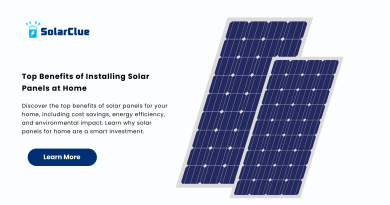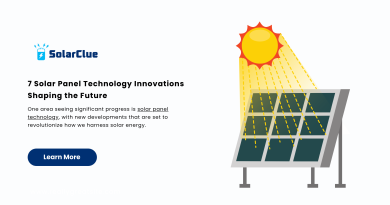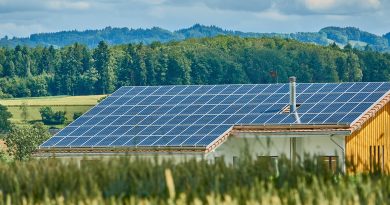Are Your Solar Panels at Risk? Common Causes of Damage Explained
Solar energy is one of the most sustainable and cost-efficient power sources today. However, despite their durability and long warranties, solar panels are not invincible. Whether you’re a homeowner or a business owner, understanding the common causes of solar panel damage is crucial for protecting your investment. In this guide, we’ll explore what can harm your solar panels, how to prevent it, and what steps you can take if damage occurs.
Table of Contents
- 1 Why It’s Important to Understand Solar Panel Damage
- 2 Key Environmental Factors Affecting Solar Panels
- 3 Mechanical and Installation Challenges
- 4 Internal Stressors and Long-Term Use
- 5 How to Prevent Solar Panel Damage
- 6 Installation & Protection Best Practices
- 7 What to Do If Your Panels Are Damaged
- 8 Signs Your Solar Panels Might Be Damaged
- 9 The Cost of Ignoring Damage
- 10 FAQs
Why It’s Important to Understand Solar Panel Damage
Knowing how your solar panel system can be damaged helps you mitigate risks, reduce repair costs, and extend their lifespan. Solar panel damage is often due to environmental, mechanical, or installation issues, and early identification can make all the difference in system performance. With the growing shift towards renewable energy, it’s vital to ensure the reliability of your solar energy system maintenance.
Key Environmental Factors Affecting Solar Panels
Extreme Weather Conditions
Hailstorms
Solar panel hail damage is one of the most aggressive natural threats. Large hailstones traveling at high speeds can crack or shatter the panel’s glass surface, reducing solar panel durability and efficiency.
Heavy Snow and Ice
Snow damage to solar panels from accumulation can exert pressure and lead to microcracks. Ice can worsen the damage due to expansion and contraction cycles.
High Winds and Storms
Storm-force winds can dislodge poorly mounted panels or send debris flying into them, contributing to solar panel weather damage and threatening the stability of your entire solar energy system.
UV Radiation
Constant exposure to sunlight can result in UV damage to solar panels, especially low-quality ones. This degradation reduces solar panel lifespan and output over time, especially in regions with high solar intensity.
Mechanical and Installation Challenges
Improper Installation
Faulty solar panel installation issues can lead to:
1. Loose wiring
2. Poor panel alignment
3. Weak mounting systems These flaws may not only reduce efficiency but also make the system more vulnerable to environmental factors and long-term solar system damage causes.
Falling Debris and Tree Branches
Nearby trees might drop branches or leaves onto your panels. Over time, accumulated debris can cause scratches, hotspots, and solar panel shading problems that lead to reduced output and compromised energy production.
Wildlife Interference
Birds and Rodents
Pigeons and squirrels love nesting under panels, leading to:
1. Chewed wiring
2. Physical damage
3. Blocked airflow causing overheating This kind of solar panel bird damage can be difficult to detect until performance drops significantly.
Manufacturing Defects
Although rare, manufacturing issues such as:
1. Faulty soldering
2. Microcracks
3. Lamination problems can degrade performance. Buying panels from trusted providers like solarclue.com helps minimize these risks and avoid solar panel warranty issues that often go unnoticed until it’s too late.
Internal Stressors and Long-Term Use
Water Damage and Moisture Ingress
Water damage to solar panels can lead to corrosion, short circuits, and delamination. Even waterproof panels can become vulnerable if the seals deteriorate over time, especially in humid climates.
Thermal Stress and Microcracking
Panels expand and contract due to temperature changes. Over time, this causes cracked solar panels and microcracks that are invisible but reduce power output. This type of solar panel efficiency loss is often cumulative, making early detection essential.
Electrical Surges
Lightning strikes or unstable grid voltage can cause surges in your system. Without proper protection, these can lead to serious solar energy system maintenance issues, potentially frying expensive components.
Aging and Wear & Tear
No solar panel lasts forever. As they age, efficiency naturally drops. Regular monitoring and understanding solar panel protection measures help you get the most out of your system’s life.
How to Prevent Solar Panel Damage
Regular Inspections
Routine checks can identify early signs of wear, corrosion, and various types of solar panel damage that might not be visible to the naked eye.
Cleaning and Maintenance
Use proper solar panel cleaning tips to remove dust, dirt, and bird droppings that can block sunlight and cause solar panel efficiency loss. The impact of dirt on solar panels includes overheating, hotspots, and lower energy output.
Invest in Quality Panels
Opt for certified panels with strong warranties and a proven track record. Visit blog.solarclue.com for comparisons and expert reviews to choose wisely.
Installation & Protection Best Practices
Professional Installation
Ensure proper setup by using certified technicians to prevent solar panel installation issues. A stable installation reduces the risk of environmental damage.
Use Critter Guards and Bird Deterrents
Install guards to avoid solar panel bird damage and related issues like chewed wires or nesting.
Install Weather Protection
Consider shields or protective covers that help in protecting solar panels from weather elements like hail, snow, UV rays, and falling debris.
Monitor System Performance
Keep an eye on system outputs through your inverter or monitoring app. This can alert you to hidden issues like solar panel shading problems or solar panel overheating.

What to Do If Your Panels Are Damaged
Step 1: Turn Off the System
Always power down your system to avoid electrical hazards before inspecting it.
Step 2: Contact a Professional
Avoid DIY fixes. Hire certified professionals to repair damaged solar panels effectively and safely.
Step 3: File a Warranty or Insurance Claim
Document the damage and check if it’s covered under your solar panel warranty issues or home insurance policy. Many providers cover environmental or accidental damages.
Signs Your Solar Panels Might Be Damaged
- Visible cracks or discolored spots
- Hotspots or burnt smells near the inverter
- Sudden drop in power generation
- Inverter displaying error messages These signs often indicate common solar panel problems that require immediate attention to avoid long-term system degradation.
The Cost of Ignoring Damage
Ignoring minor damage may lead to:
- Permanent solar panel efficiency loss
- Decreased power output and higher bills
- Voided warranties or replacement costs
- Shortened solar panel lifespan
- Safety hazards such as electrical fires
That’s why it’s critical to practice consistent solar panel maintenance and resolve issues promptly.
FAQs
Q1: Can solar panels still work if they’re slightly cracked?
A: Yes, but their efficiency will be reduced. Over time, cracked solar panels can lead to complete failure if not addressed.
Q2: Do solar panels require maintenance?
A: Absolutely. Regular solar panel maintenance and inspections can extend their lifespan and prevent damage.
Q3: Are damages covered under warranty?
A: Most warranties cover manufacturing defects but not environmental or wildlife-related damage. Always read the fine print to avoid solar panel warranty issues.
Q4: How can I protect my panels from the weather?
A: Installing shields or covers and ensuring strong mounting systems are effective solar panel protection measures.
Q5: How do I prevent overheating in solar panels?
A: Ensure good airflow beneath the panels and clean them regularly. This helps prevent solar panel overheating and maintains efficiency.
Q6: Does dirt really affect panel performance that much?
A: Yes, the impact of dirt on solar panels can lead to up to 25% efficiency loss if not cleaned regularly.
Q7: Can I clean the panels myself?
A: Yes, using safe solar panel cleaning tips, but avoid abrasive materials or pressure washers. For best results, hire professionals.
Q8: How do trees nearby affect my solar panels?
A: Trees can cause solar panel shading problems and also drop branches or leaves that may lead to damage or debris buildup.
Q9: What kind of wildlife should I watch out for?
A: Birds, squirrels, and rodents are the most common threats, leading to solar panel bird damage and electrical issues.
Q10: What’s the average lifespan of a solar panel?
A: Most have a solar panel lifespan of 25–30 years, but this depends heavily on maintenance and environmental exposure.
In conclusion, while solar panels are built to last, they are still vulnerable to a wide range of natural and man-made threats. Being proactive about solar panel maintenance and understanding the causes of solar panel damage will ensure that your solar investment continues to provide clean, efficient power for decades. For reliable panels and expert insights, visit solarclue.com or explore more helpful tips at blog.solarclue.com. Your journey to a smarter, greener home starts here — come discover how we can help you protect your solar power investment!




